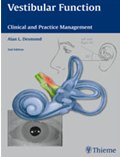What’s New? Open Ear Fittings
by Alan Desmond, Au.D.
Currently, only 20% of all people who need hearing aids actually get them. Most people also don’t realize that untreated hearing loss causes embarrassment, social stress, tension and fatigue, not only for the person with the hearing loss, but also for family members, friends and work associates. A recent study by the National Council on Aging demonstrated a dramatic benefit in quality of life from wearing hearing aids.
When someone first begins to notice hearing loss, they find that they have difficulty staying with the conversation in only certain situations. For most people, the hearing loss starts in the high pitches. This is why many people have more difficulty understanding women and children, who typically have higher pitched voices than do men. In the early stages of hearing loss, the lower frequencies may still be normal. As the hearing loss progresses, more and more situations present problems for the hearing impaired.
When the hearing loss gets to the point that social and business situations are affected, a trial with hearing aids is considered. Traditionally, cosmetically appealing hearing aids have fit down into the ear canal. This can present a problem when hearing is still normal in the lower pitches. The in the ear hearing aid occludes (blocks) the ear canal, and can create two potential problems: 1. The wearer’s own voice can sound unnatural (often described as “in a barrel”) and 2. Sound that would have been heard normally now needs to go through the amplifier of the hearing aid because the ear canal is blocked.
Open ear fittings eliminate these complaints because the ear canal is left open. A small silicone tube feeds the sound into the ear from a small discreet amplifier worn behind the ear, underneath the wearer’s hair. Not only is this type of hearing aid cosmetically appealing, it is both physically and acoustically barely noticeable. It simply feeds in the sound you need to hear, while leaving the ear canal open for sound to enter naturally. No custom mold is needed, so the entire fitting process can be performed in one visit.
The most common maintenance problem with current hearing aids is wax getting into the speaker of the hearing aid. With the open ear fitting, all the electronics sit behind the ear, away from wax and debris. The ear piece can be detached and cleaned or replaced by the patient. The fittings incorporate directional dual microphone technology, which is the only technology that has been clinically proven to improve speech understanding in noise.
Cosmetically, open ear fittings are far more appealing than their custom in the ear counterparts. The hearing aid itself is discreet and sleek in design and the tubing which couples the hearing aids to the earpiece is extremely small and unobtrusive. They are not recommended for those with severe hearing loss. One of our Audiologists or Licensed Dispensers can help you determine if the open ear fitting is right for you.



